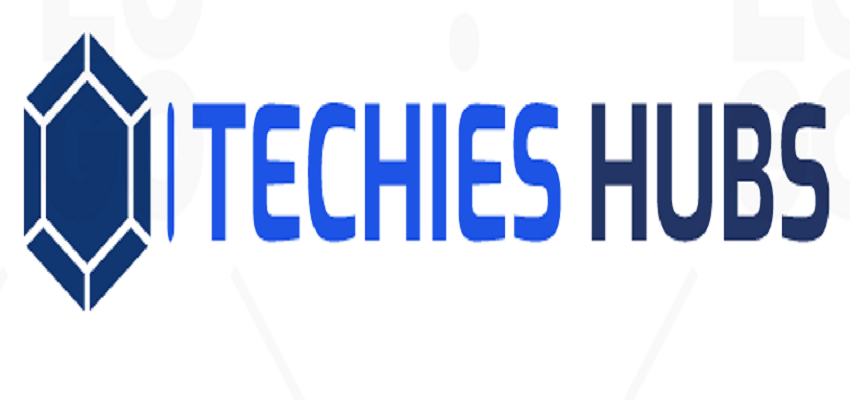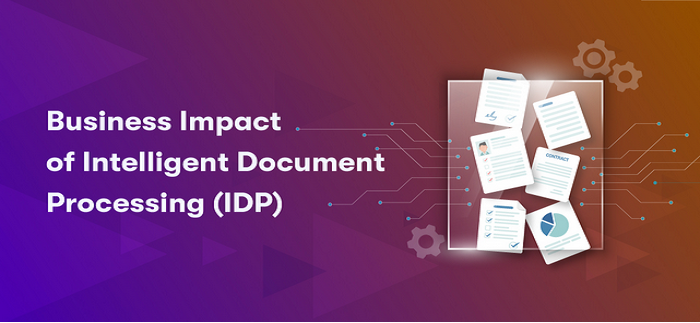Digital transformation is
becoming increasingly necessary as firms expand. The use of technology may aid
businesses in maintaining their competitiveness, which is something they are
constantly searching for. Companies must have a plan to manage and maintain
their data if they want to remain competitive. Firms have a lot of documents to
process and ensuring that the documents are processed correctly to meet their
needs is not an easy task. Thus, maintaining the paperwork as per the current
regulations is a tough task. This is where the role of an effective Intelligent Document Processing Solutions comes into play.
These days a lot of
businesses are using Intelligent Document Processing to automate their
document management procedures. For your business to run smoothly, it is
important to have a reliable document management system. The advantages of
intelligent document processing will be lost if you don't have a suitable
system in place.
What is intelligent document processing?
The term Intelligent
Document Processing (IDP), sometimes known as "intelligent capture,"
refers to a group of technologies that may be used to comprehend and convert
unstructured and semi-structured material into a structured format.
It involves the use of software
tools that can extract relevant data from documents such as emails, text
messages, PDFs, and scanned documents and classify it for further processing
using AI technologies like computer vision, optical character recognition
(OCR), natural language processing (NLP), and machine/deep learning.
Intelligent Document
Processing Solutions: How to Start
Determine the kinds of
documents you need to manage before searching for a document processing
solution. Additionally, you should choose how much processing is required.
Hence, to transform the unstructured data into actionable ones, the companies
need to implement efficient IDP solutions, either in-house or from different
solution providers.
Here are some of the
solutions for intelligent document processing available in the market.
Main types of suppliers of IDP solutions
1. Free online or offline tools
One may quickly find a vast
number of prospective options for OCR or pdf conversion by searching the
Internet for online programs that can transform pictures or pdf files
("actual" or image-based") into something more usable. They have
a highly uneven quality and won't work in many situations. In general, there is
a success rate for conversion of plain text using common typefaces on a white
backdrop (for example for onward translation into another language – sufficient
at best to achieve the real sense of the meaning).
It can be noted that the
most recent versions of Microsoft Word/Excel and LibreOffice Writer
and Calc may convert searchable PDF documents (spreadsheets or text,
respectively) quite well if the documents were originally prepared by applications
from the same office suite.
However, in general, the
cliché "you get what you pay for" still holds, and the free tools are
outperformed by most commercial software or customized open-source programmed
innovations if one needs more precision, greater flexibility, or forward data
integration.
2. Open-Source tools
Since these tools are free
and provide a level playing field for study and experimentation, they are the
focus of the majority of papers in the field of computer science. Other tools
exist for extracting text from searchable PDFs, for Natural Language
Processing, or ontological analysis. Tesseract, the most well-known OCR
tool, is one of them (there are other alternatives). Tesseract can be combined
with OpenCV (for computer vision and Pattern Recognition), Tensor
Flow/Keras, or PyTorch in machine-learning developments or research
projects.
3. Stand-alone moderately-priced packages aimed at end-users
If one requires rapid,
high-quality tangible results from OCR or PDF extraction, using specialized
commercial software may be helpful.
This can apply to:
- a private individual or a small company for a specific limited use case;
- a research institution that wants to investigate subsequent steps in the workflow without waiting for the output from a longer-term research project.
Some software packages that
have been tested (in trial or payable versions):
- Able2Extract
- Wondershare PDFElements
- ABBYY Finereader
- Kofax Omnipage
- Adobe Acrobat Professional
4. Higher-end packages with SDK capabilities
An Application Protocol
Interface (API), which can be enabled and customized using a Software
Development Kit, will be needed if data extraction from a document has to be
integrated into a workflow. These are provided by both the manufacturers of
standalone products and other companies that concentrate on the entire document
workflow.
Some of the solutions:
- (Kofax) Omnipage Capture SDK
- ABBYY Cloud OCR SDK
- Docparser
- Bytescout SDK
5. SaaS with or without APIs
Some players only provide SaaS
(software as a service), where you pay for what
you use and volume-based charges are degressive. This strategy applies to
standalone documents and APIs.
The GAFAM (Google, Apple,
Facebook, Amazon, Microsoft) and the Adobe PDF Extract API both use this as
their primary business model.
6. ERP suppliers
To avoid losing this market
entirely to competing products, several firms in the ERP (Enterprise Resource
Planning) integrated business solutions industry have begun to provide
solutions for document extraction. Although it appears that SAP and Microsoft
are engaged in this market, a firm would need to already be a client of these
vendors to have a better understanding of their capabilities.
7. Core technologies
The GAFAM firms, or more
precisely Google/Amazon/Microsoft, have now acquired much of the underlying
technology and cutting-edge scientific research.
- Google Cloud Vision
- Amazon Rekognition or AWS
- Microsoft Azure
8. Niche players
Numerous smaller businesses,
start-ups, or niche players may be found in the large supplier environment.
- Docsumo
- Filestack
- Nanonets
- Parashift
- Rossum
Conclusion
Businesses may believe that all they need to scan and transfer documents electronically is a scanner and a driver. However, if you are utilizing a document management system with intelligent document processing functions, this is not the case. The papers will be received and handled appropriately thanks to Intelligent Document Processing. With better document management, the business can operate more effectively, avoid mistakes, and maintain compliance. Hence, it is advisable for the companies to adapt to IDP solutions as soon as possible so that the businesses can flow seamlessly without hiccups.











